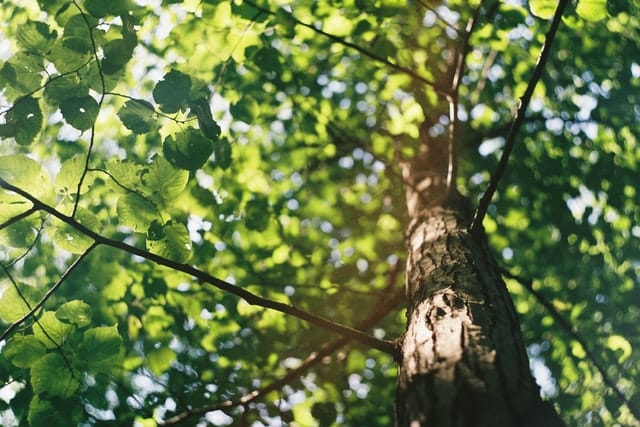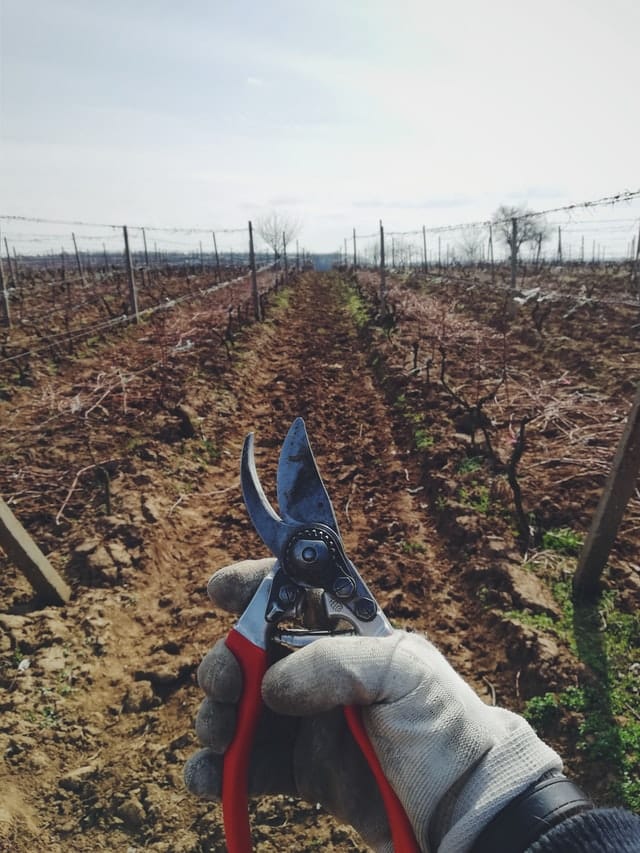
As we transition from spring to summer, woody ornamental plantings are actively growing and ready for timely pruning to support their health and longevity in the landscape. You’ll discover that a basic understanding of tree biology will equip you to give your plants the timely care they need.
It’s partly true that plants enjoy vigorous growth after a restful winter dormancy period. More important, is that when springtime arrives they are well-stocked with carbohydrate fuel that has been stored as starch the previous year.
Respecting and responding to this annual cycle is one of the first steps in achieving healthier woody plants, while also making them safe and attractive for people and pets as they mature.
#1. Prune First for Health
Keeping trees healthy in their environment, and making them attractive and safe for people, is the primary purpose of pruning. When a tree’s crown is balanced it can better support vigorous growth. If the tree is located in an urban or suburban environment, it may be subject to excessive winds. It’s vital to prune the crown to allow strong winds to pass through more readily.
In addition to heavy snowfalls, freezing rain can place significant stress on juvenile branches. In most circumstances, they will bend to accommodate the extra load without breaking, provided the newer growth is checked for balance in late spring and then as winter approaches.
#2. Respect The Fundamentals
Determining how to prune woody shade and ornamental trees is relatively simple if you know a few fundamentals. One is to prune above a healthy bud from which new growth will emerge. Thus, if a branch is broken, diseased, or otherwise declining, move down the stem to the first healthy bud and prune just above it.
When pruning more mature limbs on a major branch or the trunk, prune just above what is known as the branch collar. This is the point where the bark can close over the cut to close off the wound and merge it with the surrounding bark. Certified Arborists are skilled at identifying branch collars, regardless of the tree species. For homeowners, it’s best to perform an internet search to review a few images to be sure.

#3. Train Younger Trees
When young saplings are planted in a nursery, they are no more than whips, single stems with a root system that must be supported with a stake until they mature. After a few years, a splint or small stake is taped to one of the uppermost central branches to train it to be the leader. Looking closely, you’ll often see evidence of these stakes when buying trees.
The easiest time to train trees is when they are young and pliable. In addition to training leaders, it is recommended to remove lower branches to “limb up” the tree to the desired height. This is a gradual process that is done over a period of years. Lower limbs are successively removed as the tree gets stronger, typically to a height of 5 or 6 feet for shade trees to allow for planting foundation plantings beneath them.
#4. Keep Mature Trees Safe
Trees more than 10 or 15 years old have established their predominant shape and branching structure. Rather than planning for future growth, pruning objectives are more often focused on preserving the tree’s current growth by minimizing potential damage.
You should continue to inspect the tree for resilience against strong winds. If necessary, open up the crown to allow light to enter and wind to pass through more freely. Another practice is inspecting for weak crotches that may be prone to splitting in the event of heavy storms.
Branches that are joined at roughly a ninety-degree angle are the strongest. Branches with weak crotches have branches joined at a narrower angle that resembles a slingshot. If one of these branches is hanging such that it could damage a house during a storm, then you should hire a Certified Arborist to inspect it. He or she may recommend having it removed or braced with cables.
#5. Persistently Manage Watersprouts
Watersprouts are often confused with suckers. They are unusual, fast-growing, young stems on more mature branches, but in an odd way that distinguishes them from normal branches. These are usually the result of poor pruning practices and or abundant resources.
If you search the internet for the term, you will realize that you have seen watersprouts before but did not know what they were called. The practice of removing them is simple. Cut them off at the base of their growth. The most important thing is to be diligent in removing them, and they will disappear over time.
#6. Understand Rootstocks and Suckers
Suckers are fast-growing stems emerging from the base of the tree. Most people will prune them just above the soil or mulch level. The correct practice is to go a little deeper, usually a few inches below the surface, to prevent them from coming back or multiplying in subsequent years.
Trees are sometimes grown by grafting onto a different rootstock. If you notice suckers with leaves or even flowers that are different from the rest of the tree, then you have encountered rootstock suckers. It is imperative to manage these before they take over the tree.
#7. Encourage The Desired Shape
Hand pruning to encourage the desired shape is a rewarding practice for those of us who enjoy pruning. This is an opportunity to encourage either spreading or upright growth, and it’s amazing how much you can influence a tree’s growth habit with this over time.
In urban or suburban environments where space is tight, tipping is frequently employed to limit the breadth of a tree. You simply look for upward-facing buds are lower, younger branches and prune just above that bud. The new growth that emerges from that bud will then take that upward path. You can do the same to achieve more spreading growth with buds that are more horizontal.
When pruning is performed after deciduous leaves have fallen, it is known as dormant pruning. You may notice tree care firms doing this in early spring or winter when the temperatures are unusually warm. If you try this yourself, be sure temperatures have been above 40 for several days, otherwise, you’ll injure tissues and encourage disease
Architectural Landscape Design: Helping Homeowners Enjoy Better Living
Here at ALD, our top priority is creating living spaces that are right for you. Our landscape design team will work with you from concept to construction to create the right landscape for your personal needs. Contact us today for a free consultation to explore your next outdoor living project.
